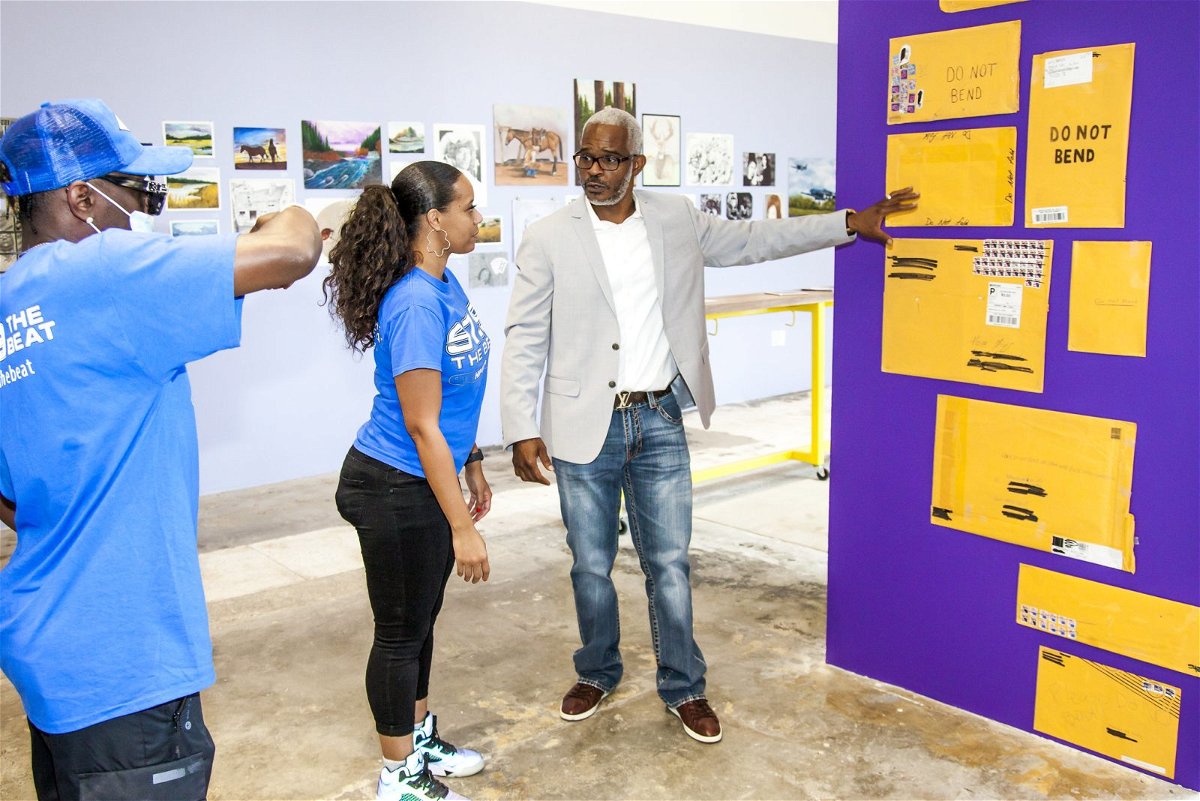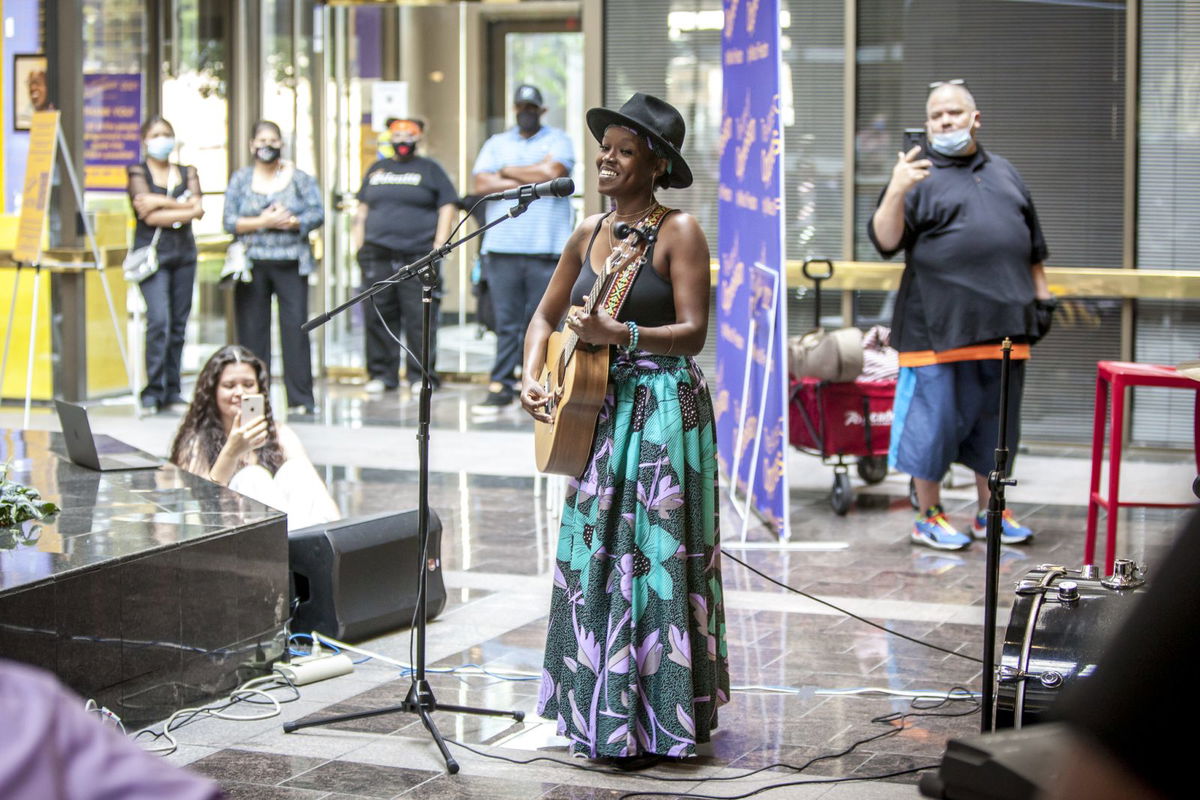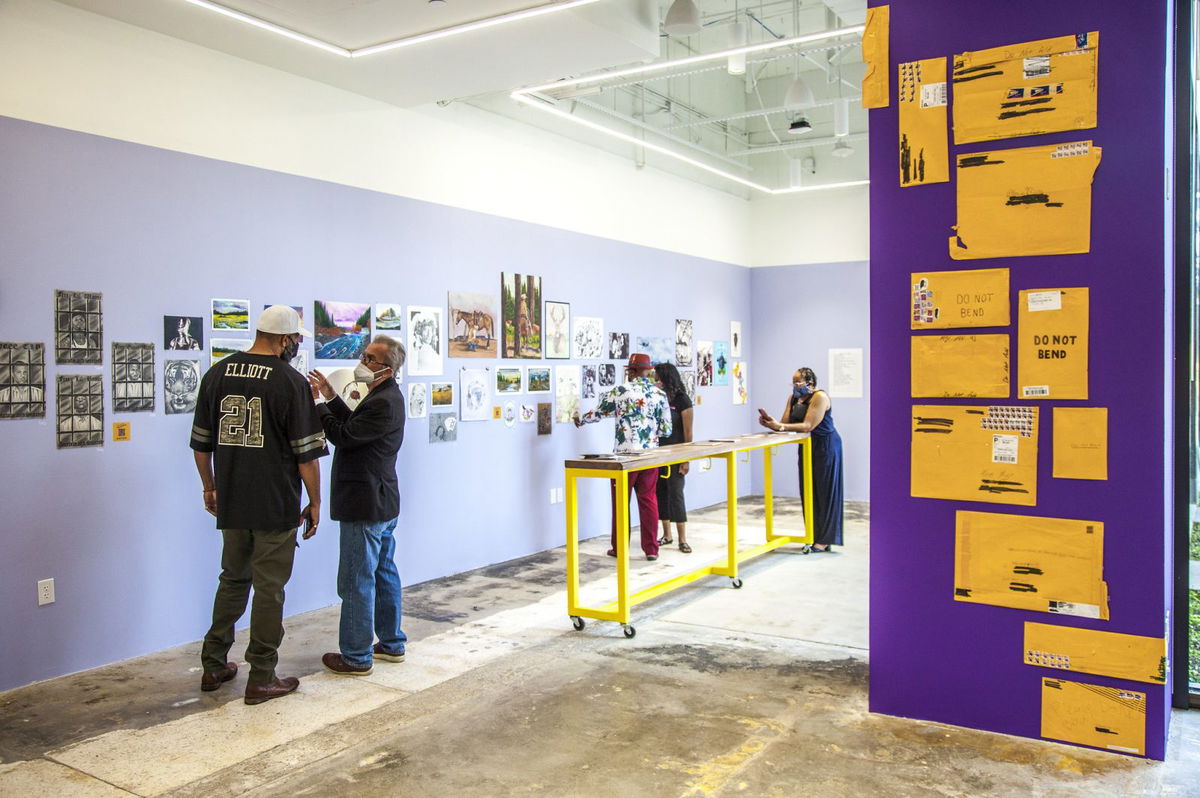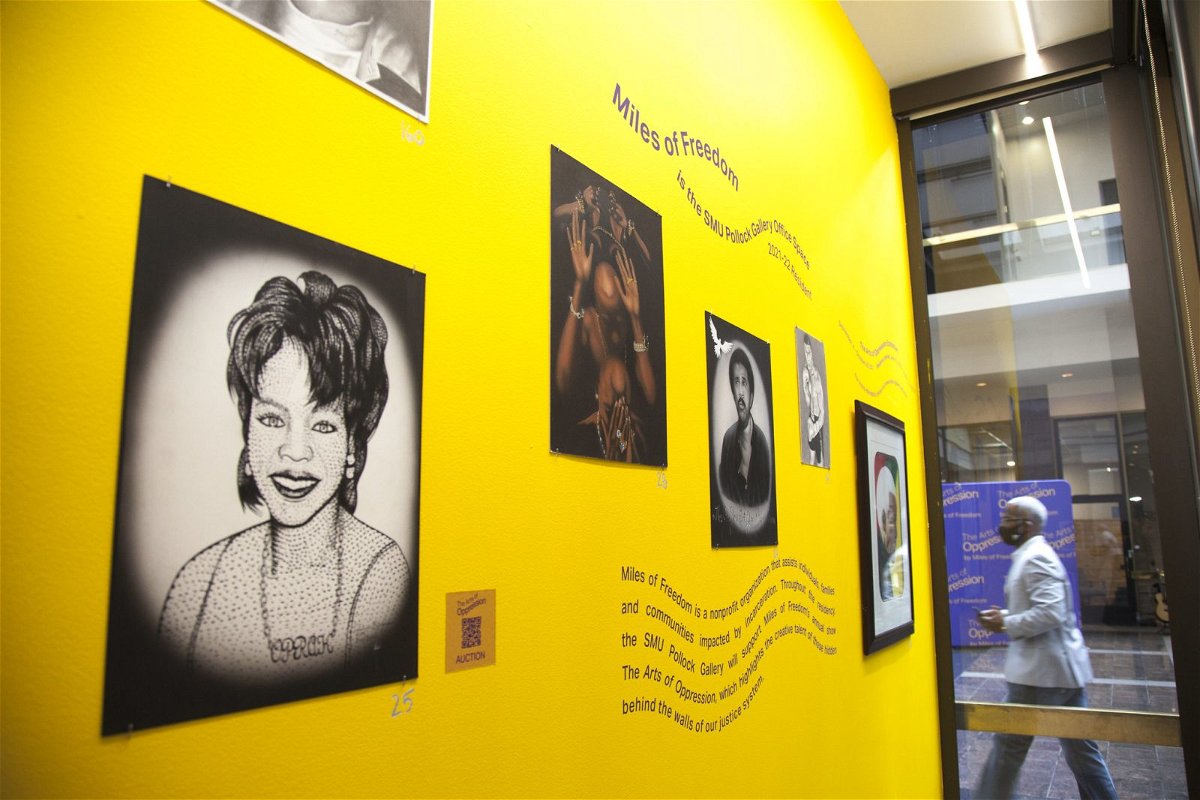
Three original pieces by Thomas “Bad Apple” Buchanan sold in this year’s “Arts of Oppression” exhibit. The self-taught artist, who creates inside a Texas prison, has garnered numerous accolades during the exhibit’s five-year run.
“Bad Apple,” as he is known in prison, was befriended by Richard Miles during his 15 years of wrongful incarceration.
“Often we overlook the talent of the oppressed because of where they came from, which places barriers on them being truly successful,” says Miles, founder of the nonprofit Miles of Freedom.
Miles of Freedom tackles this issue in all kinds of ways, including the annual Arts of Oppression exhibit, an art show that this year contained 215 pieces of art by currently or formerly incarcerated people.
It wasn’t Miles’ wrongful conviction but his experience during incarceration that led him to launch Miles of Freedom.
“The lack of rehabilitative resources within our institutions and the lack of assistance when an individual returns home from prison really felt like a gap in our services,” Miles says. “By me walking that road, it put me in a position to be a resource.”
Though Miles is from Oak Cliff, Miles of Freedom is based in South Dallas because of his involvement with MASS — Mothers for the Advancement of Social Systems — an organization run by his mentor, the late Joyce Ann Brown.
“When I was 19, my parents met Mrs. Brown and began volunteering with her in hopes that she would be able to vindicate me,” Miles says. “After I was proven innocent and got out, I became her mentee and worked at her office on Atlanta Street, which is where I really began to grow within the South Dallas community.”
Miles says he learned that a lot of individuals impacted by incarceration were funneled to South Dallas, and he felt like the neighborhood was where he could make a big impact and illuminate hope, including through the Arts of Oppression exhibit.
In past years the exhibit was hosted elsewhere and was “a one-day showing where we invited individuals, hosted the auction, and then that’s pretty much it,” Miles says. This year it was hosted by SMU’s Pollock Gallery and spanned two months.
“SMU’s Pollock Gallery and Ignite Dallas have challenged us to create a dialogue alongside the art” with “candid conversations in the sphere of re-entry into society and for social justice awareness,” he says.

Besides the artwork shown for the auction, the opening day exhibit also featured performances from singers, as well as guest speakers.
“Art comes in many forms,” Miles says. “We wanted to convey that art is not limited to paintings or drawings, but extends to things like music, dancing and many other things which can be accessed if incarcerated individuals have access to resources.”
A central question that went into the planning of the exhibit was, “How can we create conversations to talk about the impact of incarceration and the resources people need who are going through the system?” Miles says.
In response to this need, 88% of revenue from auction sales goes to the artists themselves, with the remaining 12% covers administration and advertising costs.
Most of the artwork featured in the exhibit comes from Darkwood Gallery, founded by Alma Rios, whose mission is to “help artists [incarcerated] become self-sufficient within the prison units, and enable them to provide for themselves and their family [through art],” Rios says. Her nephew in prison helps her reach out to interested incarcerated artists, and she stays in contact with them through mail and a P.O. box to which they can send their artwork to be displayed and sold.
“Since my son was incarcerated, I knew the struggles of a single mom trying to provide for someone in prison, so I thought maybe there are other people like me struggling,” Rios says. “I contacted my nephew in prison and asked him if he could find interested artists who would be interested in having their art be shown [and bought] at shows, and the message spread quickly. I managed to get into contact with lots of prisoners, and they sent the artwork in envelopes.”
This year’s exhibit included a wall of envelopes that contained the pieces Rios received from incarcerated artists.
“We put the envelopes on display to portray how difficult the process of prisoners’ sending artwork was,” says Sofia Bastidas Vivar, co-curator of the Pollock Gallery. “To be able to receive artwork or any correspondence from incarcerated people, you have to be on their visitor’s list. The artwork could not be sent to the Pollock Gallery for this reason, but Alma Rios was able to have the artwork sent to her because she created a network of people through word-of-mouth who added her to their visitor’s list.”
The exhibit features artwork only from men, Rios says, because she is only able to reach artists through her nephew, who is still in prison. Rios and Miles don’t have connections with women’s prisons.
Each year’s auction includes 200-300 pieces of artwork ranging in style, priced between $10-$500. This year’s top sale was an expressionistic watercolor titled “Corner Pocket Call Waiting” by Sean Fox, which sold for $400. Fox’s watercolor of a goldfinch and portrait of Willie Nelson also sold.

Miles says this year’s exhibit excited him, especially because colleges, like SMU, bring credibility and attention to issues such as incarceration. When Miles met curators from the Pollock Gallery, the two entities found an evident connection between the Arts of Oppression exhibit and the “Healing Pieces” initiative, led by SMU Meadows School’s Ignite Arts Dallas.
“We wanted to support Miles of Freedom and bring more attention to their mission,” says Bastidas Vivar. “Because of this, we offered them the gallery for their exhibit and also expanded it to a one-year office space residency.”
Miles of Freedom’s office hours at the gallery are Thursdays and Saturdays, 11 a.m.-3 p.m.
“My hope is that we can continue to find an educational institution that will embrace Arts of Oppression,” Miles says. “If we can do so, we can continue elevating not only the art but also the education and the importance of the project itself.”


Leave a Reply